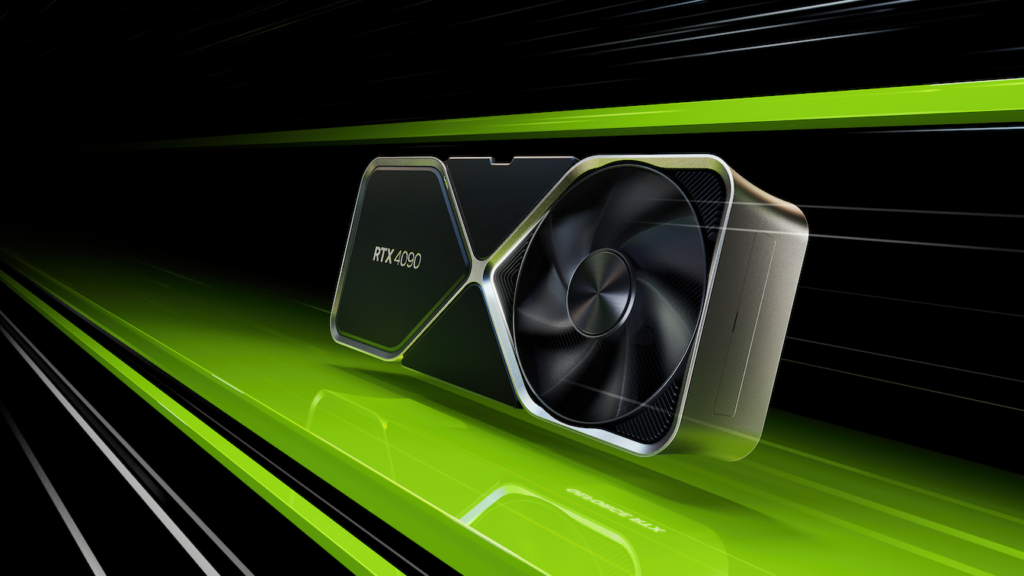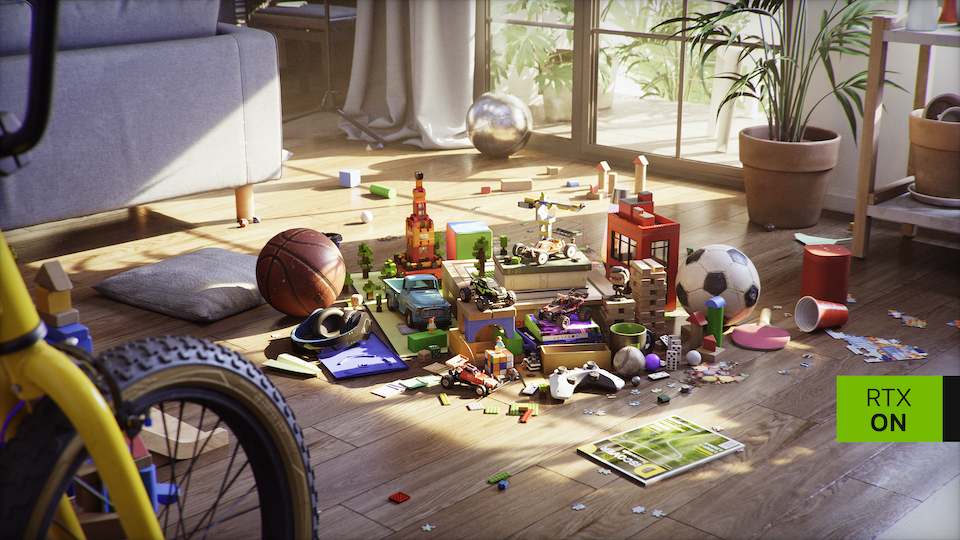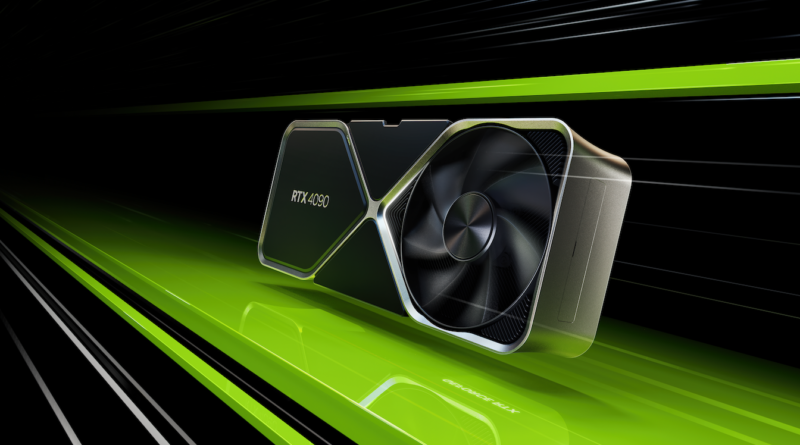Nvidia Launches the Latest RTX 40 Series Video Cards
Nvidia Launches the Latest RTX 40 Series Video Cards
Powered by Ada Lovelace Architecture and DLSS 3; Third-Gen RTX up to 4x Faster Than NVIDIA Ampere Architecture GPUs

The GeForce RTX® 40 Series of GPUs, led by its new flagship, the RTX 4090 GPU, with up to 4x the performance of its predecessor, was revealed by NVIDIA. These GPUs are intended to bring breakthrough performance for gamers and creators.
The RTX 40 Series heralds a new era of real-time ray tracing and neural rendering, which employs AI to generate pixels. They are the first GPUs in the world to be built on the new NVIDIA® Ada Lovelace architecture and deliver enormous generational leaps in performance and efficiency.
“Ada provides a quantum leap for gamers and paves the way for creators of fully simulated worlds. With up to 4x the performance of the previous generation, Ada is setting a new standard for the industry,” he said.
DLSS 3 Generates Entire Frames for Faster Game Play
The company’s Deep Learning Super Sampling neural-graphics technology for games and innovative apps, NVIDIA DLSS 3, was also unveiled by Huang. To play games much more quickly, the AI-powered system may produce complete frames. By letting the GPU to independently generate complete frames, it can get around the CPU’s performance restrictions in video games.
Many of the top game developers in the world have backed the technology, and it will soon be included into the most well-known gaming engines in use today, including Unity and Unreal Engine.
Additionally, the RTX 40 Series GPUs feature a range of new technological innovations, including:
- Streaming multiprocessors with up to 83 teraflops of shader power — 2xover the previous generation.
- Third-generation RT Cores with up to 191 effective ray-tracing teraflops — 2.8x over the previous generation.
- Fourth-generation Tensor Cores with up to 1.32 Tensor petaflops — 5x over the previous generation using FP8 acceleration.
- Shader Execution Reordering (SER) that improves execution efficiency by rescheduling shading workloads on the fly to better utilise the GPU’sresources. As significant an innovation as out-of-order execution was for CPUs, SER improves ray-tracing performance up to 3x and in-game frame rates by up to 25%.
- Ada Optical Flow Accelerator with 2x faster performance allows DLSS 3 to predict movement in a scene, enabling the neural network to boost frame rates while maintaining image quality.
- Architectural improvements tightly coupled with custom TSMC 4N process technology results in an up to 2x leap in power efficiency.
- Dual NVIDIA Encoders (NVENC) cut export times by up to half and feature AV1 support. The NVENC AV1 encode is being adopted by OBS, Blackmagic Design DaVinci Resolve, Discord and more.
New Ray-Tracing Tech for Even More Immersive Games
Real-time ray-traced scene rendering with physically accurate lighting has long been regarded as the pinnacle of graphics. At the same time, as 3D games and visuals try to offer the most accurate representations of the actual world, geometric complexity of environments and objects has continued to rise.
Physically correct graphics demand massive computational power. horsepower. Compared to the first ray-traced games released four years ago, modern ray-traced titles like Cyberpunk 2077 perform over 600 raytracing calculations for each pixel only to determine lighting.

Creativity Redefined With RTX Remix, New AV1 Encoders
For NVIDIA Studio, the RTX 40 Series GPUs and DLSS 3 bring advances. creators. Without the use of proxies, 3D artists can render completely ray-traced worlds with precise physics and realistic materials and see the changes as they happen.
The addition of new dual, eighth-generation AV1 encoders and better GPU performance also help to improve live streaming and video editing. Three updates to the NVIDIA Broadcast software development kit are now accessible to partners and include enhancements to Virtual Background quality, Face Expression Estimation, and Eye Contact.
NVIDIA RTX Remix, a modding platform to produce amazing RTX remasters of vintage games, will soon be included to NVIDIA Omniverse TM, part of the NVIDIA Studio software suite. With the aid of RTX Remix, modders may quickly and simply enable RTX with ray tracing and DLSS as well as automatically upgrade materials with potent AI tools.
Portal Is RTX ON!
One of the greatest video games of all time, Portal by Valve, has been reimagined using RTX Remix by NVIDIA Lightspeed Studios. The game has a strikingly fresh new appearance and feel thanks to cutting-edge graphical capabilities including complete ray tracing and DLSS 3. Just in time for Portal’s 15th anniversary, Portal with RTX will be made available as free, authorized download content for the vintage platformer with RTX visuals in November.
The GeForce RTX 4090 and 4080: The New Ultimate GPUs
The RTX 4090 is the world’s fastest gaming GPU with astonishing power, acoustics and temperature characteristics. In full ray-traced games, the RTX 4090 with DLSS 3 is up to 4x faster compared to last generation’s RTX 3090 Ti with DLSS 2. It is also up to 2x faster in today’s games while maintaining the same 450W power consumption. It features 76 billion transistors, 16,384 CUDA® cores and 24GB of high-speed Micron GDDR6X memory, and consistently delivers over 100 frames per second at 4K-resolution gaming. The RTX 4090 will be available on Wednesday,
October 12, starting at US$1,599.
The company also announced the RTX 4080, launching in two configurations. The RTX 4080 16GB has 9,728 CUDA cores and 16GB of high-speed Micron GDDR6X memory, and with DLSS 3 is 2x as fast in today’s games as the GeForce RTX 3080 Ti and more powerful than the GeForce RTX 3090 Ti at lower power. The RTX 4080 12GB has 7,680 CUDA cores and 12GB of Micron GDDR6X memory, and with DLSS 3 is faster than the RTX 3090 Ti, the previous-generation flagship GPU. Both RTX 4080 configurations will be available in November, with prices starting at
US$1,199 and US$899, respectively.
Where to Buy
The GeForce RTX 4090 and 4080 GPUs will be available as custom boards, including stock-clocked and factory-overclocked models, from top add-in card providers such as ASUS, Colorful, Gainward, Galaxy, GIGABYTE, Innovision 3D, MSI, Palit, PNY and Zotac.
Look for the GeForce RTX 40 Series GPUs in gaming systems built by Acer, Alienware, ASUS, Dell, HP, Lenovo and MSI, leading system builders worldwide, and many more.

